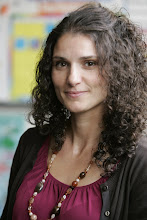We began the research process first by thinking about what we aleady know about the animal and endangered animals in general. We then focussed on using our PYP Key Concepts to write good questions that would help us facilitate our research(i.e. What does it look like? Why is it endangered? What is being done to help?). Next, we began to read about our animals and share information we were learning with each other. Once we had an understanding and some prior knowledge, we were ready for research. We use a model that has the boys select sentences from their source and then choose 3 KEY words (strong verbs, nouns and adjectives) to record in their research journal. The boys were responsible for selecting key words for 5 sentences/research question or area. Once the 3 Key word research was complete, the boys then turned their key words into their own sentences and constructed paragraphs. We created model topic sentences to choose from and then the boys added their own writing. Comments like, "The writing is so easy now that I have all my research" were commonly heard througout the process. Most boys found the research to be the most challenging part of the process. We then used google images to search for images that connected with our writing and used a text box to insert a caption about the picture. Now, we are preparing our writing and photos on a poster board so we can share all of our wonderful learning. The boys will showcase their posters at our celebration of learning in early June. (They will be posted up in the classroom next week as we finish them up. You are most welcome to come see them anytime, but we will formally showcase them in June.) Enjoy a few photos of our process below!



























